Solar cycle 25 is rapidly approaching its peak. That means propagation conditions are very favorable for QRP operations again. Add to that the ever increasing popularity of outdoor operating programs like Summits on the Air (SOTA) and Parks on the Air (POTA) and there has never been a better time to hit the Big Blue Sky Shack for some fresh air radio fun.
I have to admit that I have had one foot in the QRP camp and the other in the QRO camp for some time. I began my ham career with QRP but when we hit the bottom of the last solar cycle I succumbed to the temptation of increasing power. Even so, I did add to my QRP radio collection with the purchase of a secondhand Hendricks PFR3 – sadly from a fellow ham who had been given a Silent Key diagnosis by his doctor.
That PFR3 is still in use and is great little radio. But then, QRP Labs introduced a tiny new multiband radio called the QMX that attracted my attention. As a side note I should correct something I wrote in my last post – with thanks to Ham Radio Outside the Box readers who advised me of the error – QRP Labs is a company based in Turkey – not the UK as I mistakenly wrote. It just happens to be owned by an ex-pat Brit with a UK callsign (Hans Summers G0UPL).
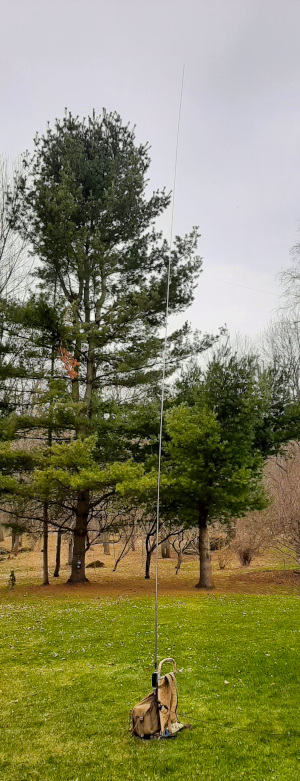
My newly acquired QMX (low band version – 80m, 60m, 40m, 30m, 20m) is the basis for a new idea – a backpacking field radio station. Let me describe it.
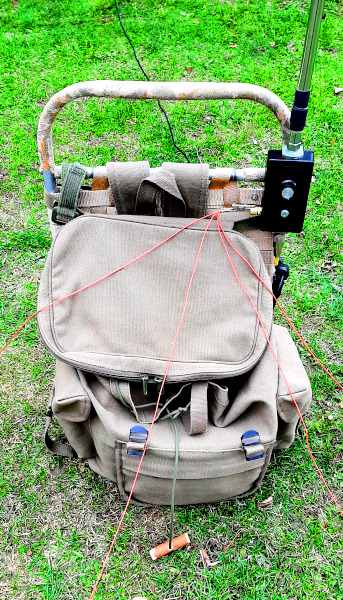
I admire HFpackers – those hams who carry their complete station on their backs and QSO while walking. I am good with the idea of carrying a complete station on my back, but I prefer to stop walking to operate. My operating style could be described as “pedestrian stationary”. In the spirit of “rapid deployment” my station has to be capable of being set up and ready to operate in no more than a couple of minutes.
So why that big, heavy looking backpack in the accompanying photo? Actually, that backpack isn’t heavy at all. It is a NATO style tough canvas rucksack on an aluminum frame. I could have put the QMX, antenna, battery and CW paddles in a much smaller pack, but the big backpack has a secondary function – it is also an antenna support as can be seen in another of the photos.

The pouch at the bottom front of the chair holds a Talentcell 6500mAH battery – good for multiple outdoor operating sessions.
.
The chair is super light and folds up into a small bag attached to the backpack.
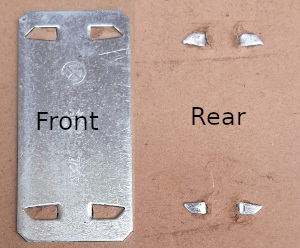
I can hike along a trail until I find a suitable clearing in the heavy tree cover that is common here on Ontario’s Bruce Peninsula. Then I slip off the backpack, extend the whip antenna, throw out the radials, pull out the rig and I am ready to operate.
The Antenna
I have previously written about an antenna I call “Long Tall Sally”. It relies on the principle that a vertical whip doesn’t necessarily have to be a quarter wavelength long. It can be made even taller with the effect that the corresponding radials can be shortened. When out on a trail, vertical space is no problem but horizontal space can be.
My backpacking antenna comprises a telescopic whip that is 18.5 feet long (purchased from one of the Chinese vendors online). It is made electrically longer by bottom loading it with a repurposed “Miracle Whip” QRP tuner. The Miracle Whip tuner is simply a very high quality variable inductor.
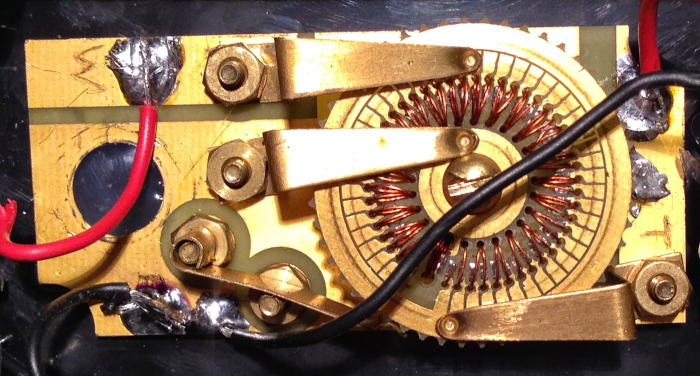
The base of the antenna is only a couple of feet above ground. Although that is more efficient than ground mounting, it was decided to employ 4 radials to improve efficiency a little more without sacrificing field expediency. The radials are 8 feet long and slope away from the feedpoint at an angle (the angle affects SWR) for a couple of feet, with the remaining length laying on the ground. As Abraham Lincoln advised: “Don’t believe everything you read on the Internet” (yes, I know) so don’t believe those who tell you the length of those radials isn’t important because they are detuned by proximity to the ground. The length isn’t critical, but it does affect tuning of the antenna.
Does it work?
I set up the backpacking antenna in the Outback (out the back of the house; apologies to relatives and readers in VK land) and was able to tune it for all bands supported by the QMX – 80m, 40m, 30m and 20m. The QMX also supports 60m but I don’t use that band. With only limited time for testing I decided to hunt a few POTA stations on 20m and QSOd satisfactorily with stations over a wide area of the US. So, yes, it can be concluded that the new backpacking rig is good to go for summer POTA activations this year.
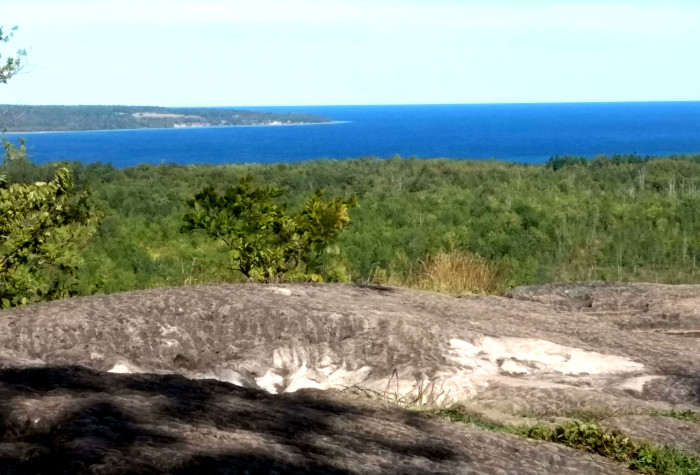
The site is in a small clearing on the Bruce Trail which runs from Niagara Falls to Tobermory at the northern tip of the Bruce Peninsula.
Help support HamRadioOutsidetheBox
No “tip-jar”, “buy me a coffee”, Patreon, or Amazon links here. I enjoy my hobby and I enjoy writing about it. If you would like to support this blog please follow/subscribe using the link at the bottom of my home page, or like, comment (links at the bottom of each post), repost or share links to my posts on social media. If you would like to email me directly you will find my email address on my QRZ.com page. Thank you!
The following copyright notice applies to all content on this blog.

This work is licensed under a Creative Commons Attribution-NonCommercial-NoDerivatives 4.0 International License.
”The length isn’t critical, but it does affect tuning of the antenna.” – on a recent POTA activation I experienced this fact about the deployment of radials.
To get a good match for the QMX on the high bands I found the tuning to be much easier when I, even rather haphazardly, folded the radials back on themselves, “shortening” them I presume.
And it makes sense, if you have a 20m center fed dipole and you want to shorten if for 15m, you don’t cut just one side of the antenna. While radial adjustment in the field might be mysterious, there is no magic involved.
LikeLike